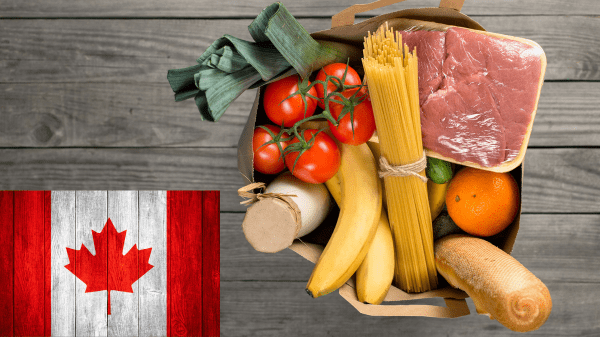For some peculiar reason, issues that are highly politicized in one nation present no difficulties in another.
People in other countries are amazed that abortion and gun control cause so much tumult in the United States. At the same time, Americans, long used to a normal retirement age of 65, find it hard to understand the mass protests in France over President Emmanuel Macron’s plan to raise the pensionable age from 62 to 64.

While the U.S. and Canada are similar in many respects, one current difference is that in our northern neighbor, food inflation is highly politicized. Although Americans object to price rises, they seem to regard it as part of an overall economic situation that does not call for government intervention.
Actually, food inflation looks worse here than it is up there. Canadian food inflation was 8.9 percent in 2022, whereas in the U.S., it was a stiff 11.4 percent. (Fruits and vegetables were on the low end of increases.)
Statistics vary, of course: one February report by the Toronto Star indicated that “food prices grew by 10.4 percent year-over-year in January, according to data released Tuesday by Statistics Canada.” At any rate, it is probably fair to say that food inflation rates in the two nations are within a couple of percentage points of each other.
The Canadian government is looking into the role of retail grocers in food inflation. In October 2022, the Competition Bureau of Canada launched a study aimed at creating recommendations to foster more competition in the grocery industry; it is expected to be published in June 2023. Astonishingly, the Canadian Parliament voted 327-0 to have the Competition Bureau investigate.
Grocery retailers counter by saying their higher prices are due to increased costs from vendors and that their own margins are in fact lower than vendors’. They complain that the government investigations are examining retail grocery only, without considering pricing practices further up the supply chain. Retailers add that inflation is a global issue and can hardly be blamed on them alone.
In any event, outrage among the Canadian public and its legislators is leading the government to demand a Grocery Code of Conduct, although what this might entail is far from clear.
The political charge associated with food prices in Canada—and its comparative absence from the U.S.—is no doubt due to a complex of factors that are beyond simplification. A layman can ask how well economists understand inflation themselves.
One difference, though: as I pointed out in a recent column, Canada, despite its more generous social safety net overall, does not have a food purchase assistance program for the poor like the Supplemental Nutritional Assistance Program (SNAP, aka food stamps) in the U.S. The “grocery rebate” currently proposed in the Canadian federal budget is a one-time measure only.
Conceivably the higher exposure to increased food prices among low-income Canadians could help explain inflation’s higher political charge in our northern neighbor.



